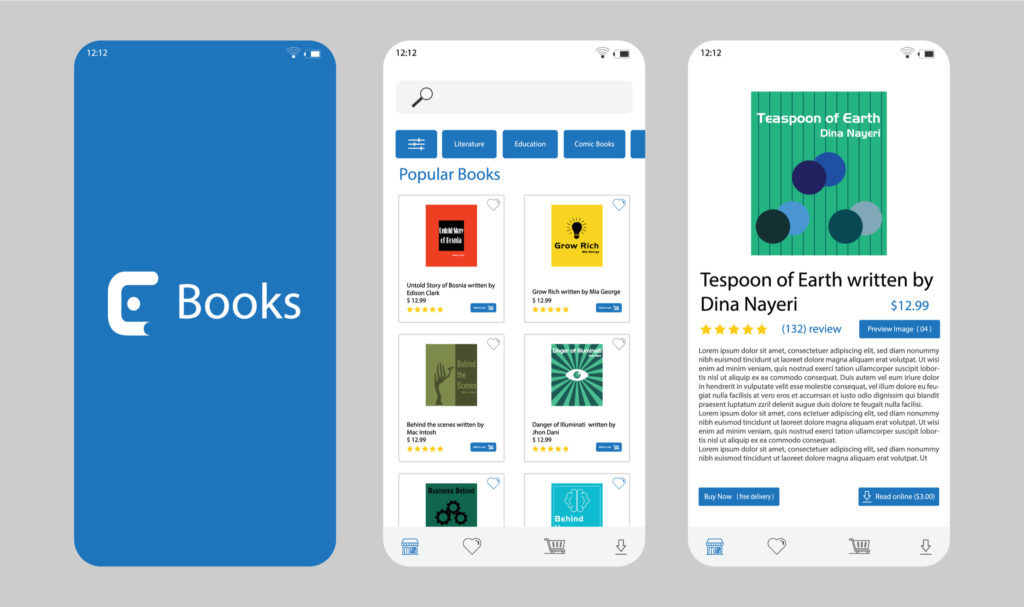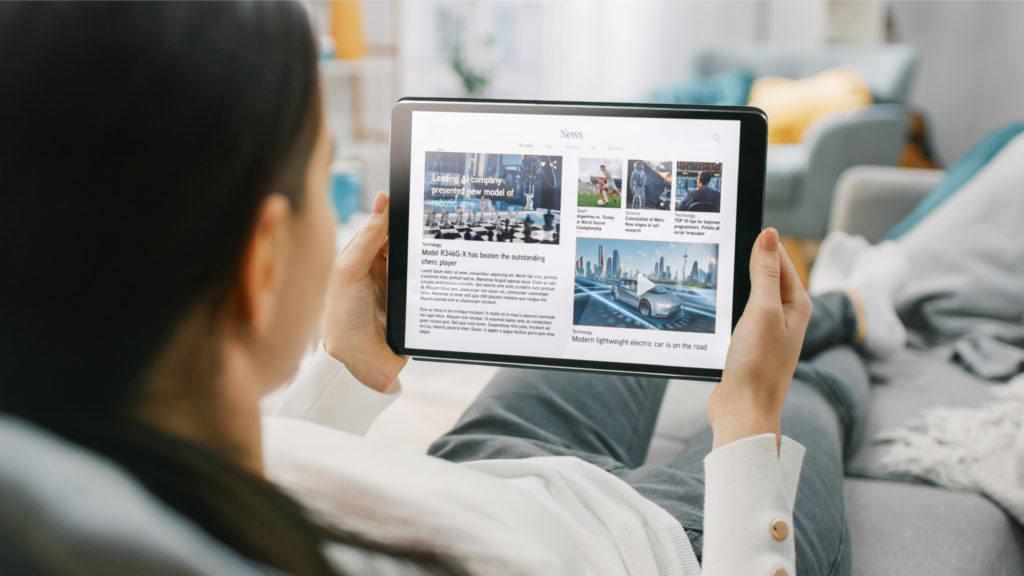How to promote book apps
Reading is a culture that, even though threatened, will never die. Whether for leisure, educational, spiritual, or personal development purposes, people will always find a need for books. Several people will argue that nothing beats the feeling of holding a physical book, flipping its papers, and perceiving that distinctive book smell that draws you further into the book’s content.
While this may be true, it is also true that the proliferation of mobile devices and apps is gradually taking us away from the physical world to the virtual world. Because they spend more time on their phones these days, book lovers have to keep up with their reading culture by using any of the best book apps.
What this implies is that building the reading app isn’t all that matters. You also need to get the book app out to the users who require them and monetize your effort. This creates a market that can be exploited if you’re not merely excited about the challenge of adding a book app to your extensive app development portfolio.
This article will show you how to market a book app to ensure that it becomes the reader’s best choice and generate you some revenue.
Business Model of Book Apps

Before discussing how to promote a book app, you need to understand what’s in it for you. Is there a market for book apps? Are people interested in reading through apps? Can you make some money through book apps? How can you monetize book apps?
We’ll answer these questions in this section by first giving you some e-book statistics. According to Statista, in the USA, the estimated number of e-books sold in 2020 amounted to $191 million. The revenue generated from trading e-books in the USA was $1.1 billion, and 72.88% of book publishers digitally publish their books. Also, in 2020, 1304,401 e-books were posted by individuals and not book publishers.
These statistics matter because it shows you how much people are invested in acquiring and reading e-books. You may be wondering, “but I’m creating a book app and not an e-book.” That’s fine. The link between them is that the reader needs a perfect book app to read and enjoy e-books. Now, look back at the statistics, and you’ll see that your users are waiting for you already.
Book retailers understood these statistics early enough and have jumped into the book app market. Barnes and Noble, in 2004, developed an e-book reader device, Nook, and a Nook e-book reader app to go with. They understood the trend and decided to provide more reading channels for their customers. They launched Nook and its reading app in the year they made $277 million extra from selling Nook-related products. They also won over about 27% of the e-book market in the USA.
A quick search on the app stores will disclose that Nook and Kindle, the reading app for Amazon’s reading device, are among the top book apps. However, the business model for different categories of book apps differs in both the Apple store and Google Play Store. While Apple store’s popular book apps are either entirely free or free but embedded with in-app purchases, most of the book apps are accessible on the Google play store. However, in the Apple store, the Bible and audiobooks are not free. In Google Play Store, dictionaries aren’t free.
You’ll have to study both markets very well to select the right strategy for your book app, looking into the unique features your app is offering. There are several strategies to consider if you’re looking for how to monetize your reading app. They include:
- Subscription model: This monetization strategy requires readers to subscribe to the app periodically to enjoy its full features. This is the kind of book app business model that Kindle uses.
- Sponsorship deals: This requires you to get businesses that have a similar customer base as yours to sponsor your app.
- Partnership deals: This book app monetization strategy requires you to have partnership agreements with businesses with a similar audience. For instance, you can partner with a bookstore to sell their hardcopy books, such that when a user places an order for a hardcopy, you get a share in the profit.
- Advertising model: This is the popular choice for book app publishers whose book apps are free. It requires you to display ads that your users will view when they’re using the app.
- In-app purchase model: This book app monetization model involves asking the readers to pay for books or special features in the app. If you’re going to use this model, some of your books or app features must be free.
It’s best to weigh the pros and cons of any of these monetization models for book apps before eventually selecting one.
How to Promote Book Apps
Now that you’ve seen how lucrative the book app market is and how you can monetize your book app let’s dive into how to market a book app. This part will go a long way to help you achieve the goals you’ve set for your app.
Design Your Book Apps

There are several book apps in the app stores, so your book will not be the first. You need to have a book app idea and design that stands out from the rest of the books. The first step is to study your competitors to see what features make their apps unique, then provide a better version of their top features or even more features theirs doesn’t have.
It’s best to design your book app with some of the following features:
- Search and navigation that is easy to find and use: Most reading app users have many e-books on their apps. A search or/and navigation feature will help them locate a particular book with ease.
- Offline use: Most readers still want to access the books in their reading app when they are offline or don’t have a good network connection. This is a feature that the top actualThesebook apps have.
- The ability to switch to night mode: The night mode is a feature that darkens the interface of the reading app. This app helps to save the users’ eyes from excessive light from their devices, especially at night.
- Reading progress: Your app needs to be designed with a feature that shows your readers vital statistics like the current progress of their reads, the kind of books they’re reading more, and how much time they spend reading books.
- Translation service: Some books may not come in the language of your users. So, your book app should come with a service that effectively translates the original language a book was written to the preferred language of your users. Only the best book reading app is designed with this feature.
- Ability to play audiobooks or convert text to speech. This used to be a feature for only the top book apps, but lately, more book apps have this in their design. This feature helps your user read books faster on the go without having to look at their screens.
If you’ve designed your book app to have these fantastic features and built it with warm and attractive colors and fonts, the next thing to do is to inform your users about them. You can create a compelling page for the book app where you display attractive app screenshots to the users. You can also make a video preview that exposes the app, its features, and usage to the users. Then, don’t forget App Store Optimization (APO). Ensure to adequately describe your app with the relevant keywords for apps in your app category and explain why they need your app.
Prepare User-Friendly Interface

After taking your time to design your app, the look and feel come next. This is something that book lovers don’t joke with. The colors, the texts size, fonts, and the display of books matter here. Some users are won over by book apps that display their books on a shelf.
Also, book users want to get the same or close to the same feel they get from reading an actual book when they’re using a reading app. So, you have to pay attention to the action when they turn to the next page. Top book apps allow you to slide a finger across the screen to turn to the next page – a simple gesture for reading books – and when you do this, the bottom edge of the rises and cascades in a fluid way, just like real books.
You can even add sound effects when the user is leafing through the pages of a book. This is what makes a real book app. Again, pay attention to the light of the screen and the background of the book app. Offer your users the day and night feature and allow the user to select locations that suit their mood.
This is where personalization comes in. Your app should allow the users to customize it the way they like. They should be able to choose the kind of book background and color they want. They should also be able to adjust the book’s text size and select the font they love. Some top book apps even allow the users to choose the page margin for books.
Don’t also forget the ability of your users to highlight texts in the book they’re reading. Provide them with different colors to do this and make a section in the app where they can navigate to see all the texts in the book or other books they’ve highlighted.
Create Content on the Book App

You may be wondering whether you need content for book apps. Shouldn’t it simply be about look and feel and the ability for the users to see all the books they have on their device and read them? The best book reading app has more than this. It also provides content in the app that the users can engage with.
Come to think of it; your users want to know the new books released in different categories. They just don’t want to read any book they see; they want people to recommend books for them. Worse, they may not have any books on their phones and have no idea where to download books from. Some may not even know what to read. This is where content comes in.
Your readers need help, and your content has to help them. Provide them with books – free and paid – that they can download, store, and read in the app. You can also have a community in the app that reviews books in different categories that the user can quickly join and read book reviews before selecting a book to read.
Personalization also comes into play here. Your app should provide readers the option of selecting genres they’re interested in so that only books they’re interested in will be suggested to them. You can also allow them to create a reading plan that’ll assist them in completing their books. A reminder for when it’s time to read a chapter, set by the user in the app, can go a long way.
Get User’s Reviews

In all your book app marketing efforts, you want to get new users and retain old ones. User reviews can help you achieve this. If your book reading app has a web version, which we strongly recommend – you can write a good review of your app in its blog section and promote it. You can register on topics like “The Best Book Reading Apps in 2021,” where you list several competing book apps and make your app the first on the list. Doing this will attract new users who are looking for a new book app to switch to.
In addition to reviews on blogs written by yourself or your team, you need the users’ reviews of your app. Not many users will go back to the app stores to drop a comment about what they feel about your book app, so you will need to solicit reviews from them.
One way you can do this is to use an in-app rating. These are prompts that display on the users’ screen, asking them to rate the app when they’re using the app. When this is effectively done, it doesn’t take the user away from his current screen. However, you need tact when using an in-app rating. You have to send rating requests to the users when they are satisfied with the app. So, it’s best to send in the rating request when they aren’t trying to interact with the app – probably as they’re exiting the app after reading a few pages of their book. Also, ensure not to interrupt them with the prompt.
If you have a social media sharing option in your app that allows your users to share content, ensure not to interrupt them with the prompt. To popular social media platforms, this will go a long way. It will not only attract new users but retain the old customers as you have successfully engaged them with a tool to share their opinions about the books they’ve just read in your reader app along with the lines or paragraphs that impacted them.
Final Thoughts
Technological advancement and the more significant addiction to smartphones may be causing the reading culture to drop, but this is more an opportunity than a challenge. Reading is a habit that many can’t unlearn. One that those yet to be born will also pick. So, it’s time to take advantage of technological advancement to create a real book app that book lovers will never want to do without. The marketing strategies you use to market your book app will determine the acceptance and addiction of your app. This is why you have to do it right once and for all by following the tips discussed in this article.
___
by Yunus
source: AppSamurai
